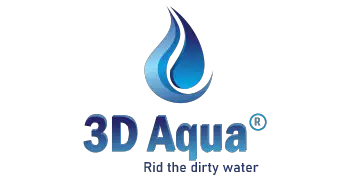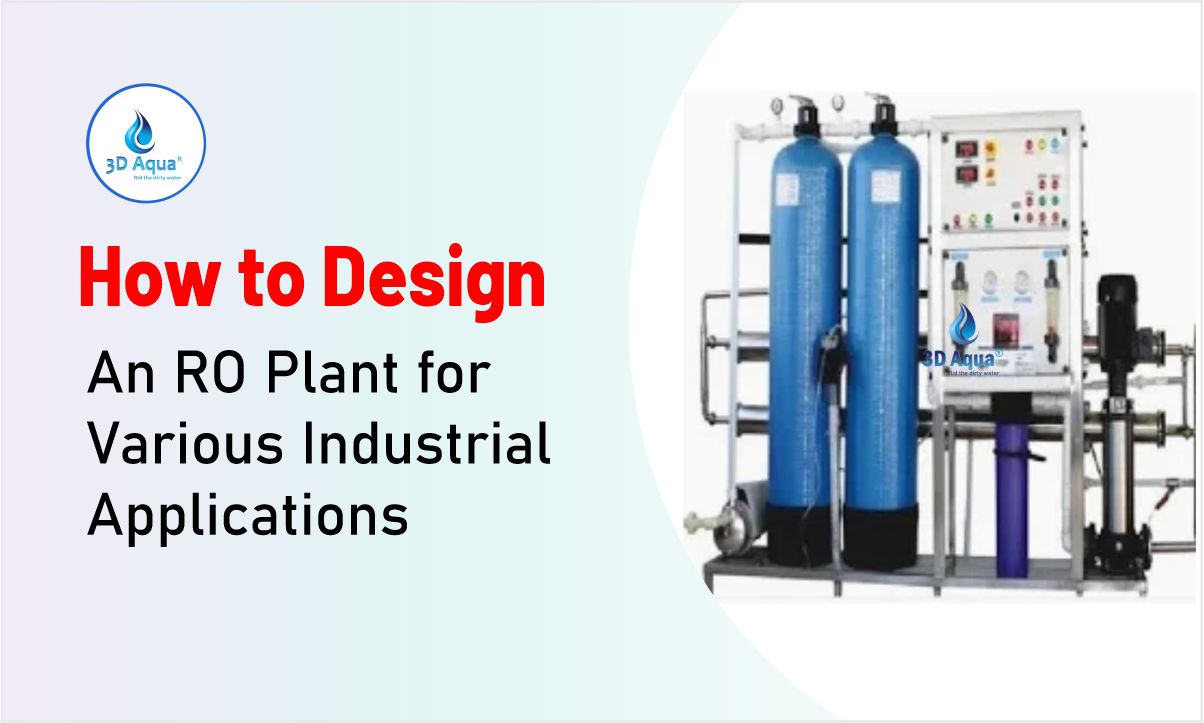Reverse Osmosis (RO) technology has become a cornerstone in industrial water treatment due to its exceptional efficiency in purifying water by removing dissolved salts, impurities, and contaminants. By using pressure to push water molecules through a semi-permeable membrane, RO systems provide high-quality, purified water for various applications. These systems are widely utilized in industries such as wastewater treatment, desalination, food and beverage production, pharmaceutical manufacturing, and power generation. This article explores how to design and implement an RO plant that meets the diverse needs of different industrial sectors while optimizing efficiency, energy consumption, and overall performance.
Key Components of an RO Plant
An RO plant is typically made up of several critical components, each playing a vital role in ensuring the water purification process runs efficiently. Understanding the function of these components is essential for designing a system that meets the unique needs of an industrial application.
- Pre-Treatment System
The pre-treatment system is designed to prepare the feedwater for the RO process by removing larger particles, debris, and impurities that could damage the membrane or clog the system. Typical pre-treatment systems include:- Sediment Filters: Used to remove large particles such as sand, silt, and other suspended solids.
- Carbon Filters: Remove chlorine, organic compounds, and other contaminants that can damage RO membranes.
- Water Softening Units: Prevent scaling by removing hardness-causing minerals like calcium and magnesium.
- Antiscalant Dosing Systems: Prevent mineral scaling on the RO membrane by adding chemicals that inhibit scale formation.
- High-Pressure Pumps
High-pressure pumps are responsible for forcing water through the semi-permeable membranes under pressure, which is essential for the RO process. The pump size and power depend on the required flow rate and feedwater quality. - RO Membranes
The heart of any RO plant is the membrane, which separates pure water from the contaminants. These membranes act as barriers, allowing only water molecules to pass while rejecting dissolved salts, heavy metals, and other impurities. The design of the RO membranes varies depending on the specific application and feedwater conditions. - Post-Treatment System
After the water has passed through the RO membranes, it often requires additional treatment to meet specific quality standards. Common post-treatment processes include:- Mineralization: Adding essential minerals like calcium and magnesium to improve the taste and quality of water.
- pH Adjustment: Correcting the pH of the treated water to ensure it is safe for industrial or consumer use.
- UV Sterilization: Used to kill any remaining bacteria or microorganisms to ensure the water is potable.
- Energy Recovery Systems
RO plants are energy-intensive, as they rely on high-pressure pumps to push water through membranes. Energy recovery systems, such as pressure exchangers or turbochargers, help reduce the energy consumption by reusing the pressure energy from the concentrate stream.
Design Factors for RO Plants
Designing an RO plant requires careful consideration of several factors to optimize its performance, energy efficiency, and water recovery rates. The following design factors are critical in determining the best configuration for any given industrial application.
1. Feed Water Quality
The quality of feedwater has a direct impact on the design and efficiency of the RO system. The nature and concentration of impurities, such as total dissolved solids (TDS), hardness, salinity, and organic contaminants, will dictate the choice of pre-treatment systems, membrane types, and post-treatment technologies.
- High TDS or Saline Water: Seawater desalination or brine treatment requires high-pressure pumps and membranes that can withstand high salinity levels.
- Low TDS or Industrial Wastewater: For industries that deal with low TDS water (such as wastewater treatment), the pre-treatment system must focus on removing suspended solids, biological contaminants, and toxic chemicals.
2. Production Capacity
The production capacity of an RO plant dictates the size of the equipment required, including the number and size of the high-pressure pumps, membranes, and energy recovery devices. The required flow rate and volume of treated water will determine the scale and complexity of the system. A larger capacity will require multiple membrane stages or parallel systems for efficient operation.
3. Energy Efficiency
RO plants are known for their energy consumption, particularly due to the high-pressure pumps. Therefore, optimizing energy usage is critical in reducing operating costs. When designing an RO plant, considerations must be made for:
- Energy Recovery Devices: These systems capture and reuse the energy from the concentrate stream, reducing the power required for pumping. Pressure exchangers and turbochargers are commonly used in large-scale desalination plants.
- Variable Frequency Drives (VFDs): These devices control the speed of pumps based on demand, helping to conserve energy and minimize wear on the equipment.
4. Water Recovery
Water recovery refers to the ratio of the permeate (clean water) to the feedwater. RO systems generally recover 40–75% of the feedwater, with the remaining portion being expelled as concentrate or brine. Recovery rates can be optimized by:
- Adjusting Operating Conditions: By carefully managing temperature, pressure, and flow rates, recovery rates can be maximized.
- Use of Multiple Stages: Multi-stage RO systems can enhance recovery rates and reduce energy consumption by progressively concentrating the reject stream.
5. Operating Conditions
The operating conditions of the RO plant must be tailored to the feedwater characteristics. This includes:
- Temperature: High temperatures can reduce membrane efficiency and increase fouling. Temperature management systems may be required for temperature-sensitive applications.
- pH Levels: Maintaining the correct pH range is essential for preventing membrane damage and scaling. pH control is a critical part of the post-treatment process.
Industrial Applications of RO Plants
RO technology is widely used in various industries, each with specific requirements and challenges. Below are the primary industrial sectors where RO plants are employed.
1. Wastewater Treatment
Industrial wastewater often contains high levels of contaminants, including chemicals, heavy metals, and organic compounds. RO plants play a crucial role in treating and recycling wastewater for reuse within the industry or for safe discharge into the environment. The design of the RO system depends on the composition of the wastewater and the required quality standards for discharge or reuse.
- Multi-Stage RO Systems: These systems are used to achieve higher purification standards for complex wastewater, such as from chemical plants, textiles, or dyeing industries.
- Water Reclamation: Wastewater can be treated and reused in various processes, reducing the need for fresh water and helping industries comply with environmental regulations.
2. Desalination
Seawater desalination is a growing industry, particularly in water-scarce regions. RO technology is the most common method for converting seawater into potable water. The design of desalination plants focuses on handling high salinity levels, biofouling, and ensuring high recovery rates to minimize waste.
- Large-Scale Desalination: Desalination plants are typically large, multi-stage systems that can treat millions of gallons per day. These plants often include robust pre-treatment systems to prevent biofouling and scaling.
- Energy Efficiency: As desalination is energy-intensive, energy recovery systems are used to minimize the power requirements.
3. Food and Beverage Industry
In the food and beverage industry, RO plants are used for producing high-quality water for the manufacture of beverages, dairy products, and processed foods. The water must meet strict hygiene and quality standards, which requires highly efficient RO systems with specialized pre- and post-treatment processes.
- Microbiological Filtration: To ensure the water used in food production is free from bacteria and viruses, additional filtration and UV sterilization are often incorporated into the RO system.
- Consistency and Stability: For applications like beer brewing or dairy processing, consistency in water quality is essential. The RO plant design should ensure stable performance over time.
4. Pharmaceuticals
The pharmaceutical industry requires ultrapure water for drug formulation, cleaning, and sterilization processes. RO systems designed for pharmaceutical applications must meet strict regulatory standards, such as those set by the U.S. Pharmacopeia (USP) or the European Pharmacopoeia.
- Sterile Environments: The RO plant must operate in a sterile environment to ensure the purity of the water used in manufacturing.
- Quality Control: Water quality must be monitored continuously to ensure that it meets the required standards for pharmaceutical manufacturing.
5. Power Generation
Power plants, particularly those using coal or fossil fuels, require large quantities of water for cooling purposes. RO plants are designed to treat the water to ensure it is free of contaminants that could damage the plant’s equipment or reduce efficiency.
- Cooling Water Treatment: RO systems are used to treat cooling water, ensuring that it does not contain scaling minerals or biological contaminants.
- Wastewater Treatment: RO plants are also used to treat wastewater within power plants before it is recycled or safely discharged.
Conclusion
Designing an RO plant for various industrial applications requires a deep understanding of the specific requirements of each sector. From wastewater treatment to desalination, food and beverage production, and pharmaceuticals, RO technology offers a versatile and efficient solution for water purification. Key design factors such as feed water quality, production capacity, energy efficiency, and water recovery must be carefully considered to ensure the system meets the operational demands while minimizing environmental impact and operational costs.
By integrating modern technologies such as energy recovery systems, advanced filtration methods, and smart control systems, RO plants can operate more efficiently, reduce energy consumption, and help industries meet their sustainability goals. Whether you are designing a small-scale system for pharmaceutical manufacturing or a large-scale desalination plant, understanding these principles will ensure you achieve optimal results and long-term performance.
If you are looking for expert guidance in designing an RO plant for your industry, 3D Aqua Water Treatment Company is here to help. Our team specializes in providing customized water and wastewater treatment solutions tailored to meet the unique needs of your industry.
To explore customized commercial RO plants, industrial RO plants, and water treatment solutions in your area, contact 3D Aqua Water Treatment Company:
Phone: +91-89630-89630
Email: info@3daqua.in

